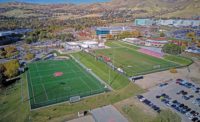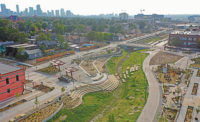Attitudes about urbanism are changing as people embrace the social, cultural, environmental and financial benefits of more urban lifestyles. Even in the still relatively young frontier cities of the western United States, urbanism is on the rise.



Yogi Berra,former Major League Baseball player and manager, said , “You can observe a lot by just watching.” Jane Jacobs, one of the great city planning minds of the 20th century, also had a lot to say about observing, and used her time spent watching how people use cities as a major influence in how to plan cities.
Planning cities is becoming increasingly complex, as both the number of people and the ways we live in and use cities is changing rapidly. It is more important than ever that we observe well so that we can plan well - and it’s got to be a team sport.

SOREN D. SIMONSEN
For much of recent history, especially the past 3,000 years or so, colonization and urbanization have become progressively important to human settlement and lifestyle. For centuries, much of the design, planning and construction of buildings and cities was practiced and executed without clear lines of specialization. Leonardo da Vinci, Michaelangelo, and countless others worked individually across disciplines - including planning, urban design, landscape and site design, architecture, interior planning and decorating. They were fine artists, sculptors, master craftsmen and engineering innovators of their time, all rolled into one.
Over the past century, as the technologies of city and building systems have become more complex (think of wastewater treatment and ubiquitous highway transportation systems on a regional scale, along with intricate electrical/mechanical systems on a building scale). The fact is, we have created many specialized, distinct and separate disciplines. These increasingly isolated disciplines have resulted in tremendous innovations, all of which have increased safety, security and comfort. They have, however, not always produced consistent, desirable or sustainable collective outcomes when cities are evaluated as a whole.
Highways and automobiles that once offered seemingly limitless freedom to travel are now mired in congestion and gridlock. Soaring fuel costs have curbed the desire of many to even travel short distances by car. But few viable alternatives are available — even walking two blocks to the store or to school can be an extreme personal safety risk. Energy consumptive systems that once moderated the climate indoors now seem to exacerbate the climate crisis of the entire planet.
So what happened? And what happens next?There are three major factors that will influence how we live and how we build cities in the 21st century. The first is population. Estimates suggest that the worldwide population may double or triple by the year 2100, to between 15 and 20 billion people. More people may be born in the next century than have lived in all of human history combined. For now, the growth rate is exponential and most of that growth will occur in cities.
The second is availability of natural resources. Though scientists predict that at some point there may be a leveling of current population growth rates based on availability of known resources of the planet, that stabilization may not come without considerable conflict. The United States, which has five percent of the world’s population - yet consumes 25 percent of the world’s natural resources - could be at greatest risk. There appears to be no alternative to vastly improving the efficiency of resource use.
The third is the response to climate change. Whatever your opinion concerning the cause of temperature increase, there is little argument that the impacts of temperature, sea level, and natural disasters will significantly change our quality of life and our development patterns, if for no other reason than the sheer number of lives impacted due to population growth.
Attitudes about urbanism are changing as people embrace the social, cultural, environmental and financial benefits of more urban lifestyles. Even in the still relatively young frontier cities of the western United States, where wide open spaces and rugged individualism have characterized development patterns of cities over the last half-century, urbanism is on the rise. This is evidentin the proliferation of mass transit systems, renewed expansion of urban housing - even among families - and a growing concentration and clustering of cultural, education, retail and employment opportunities in our downtowns, as well as in suburban town centers.
To sustain life of any quality, cities, people and nature must evolve to a better state of coexistence where mutual benefit is nurtured. And rather than operating in silos of practice or technical expertise, there is an urgent need for a multi-disciplinary approach to the planning and design of our cities and regions.
The needs we face in the west and as a worldwide society during this period of rapid urban growth and transformation over the next half century will require enormous political and professional initiative. We have the tools and expertise. Now, we need the leaders who will write this important chapter in history. Are you in?






